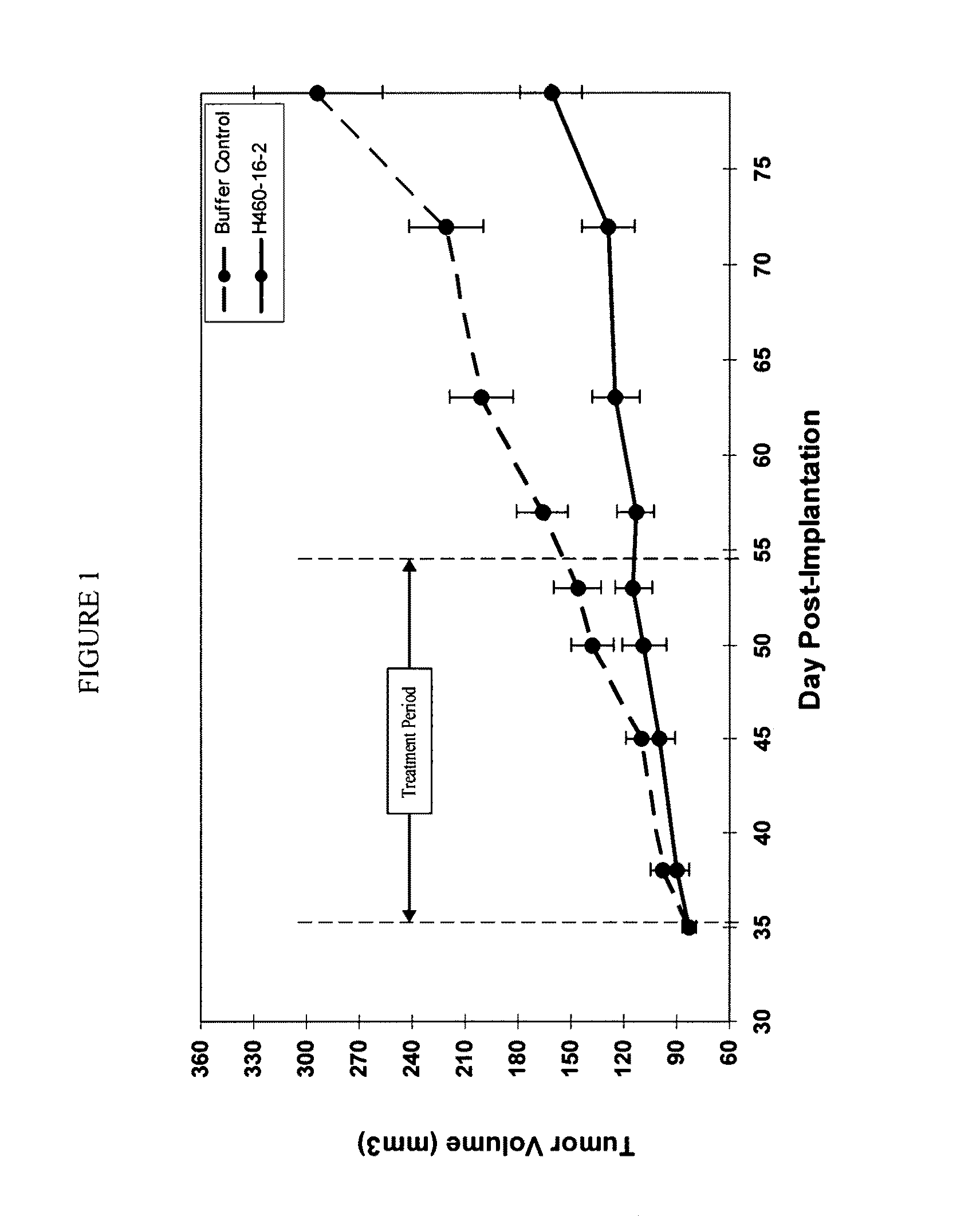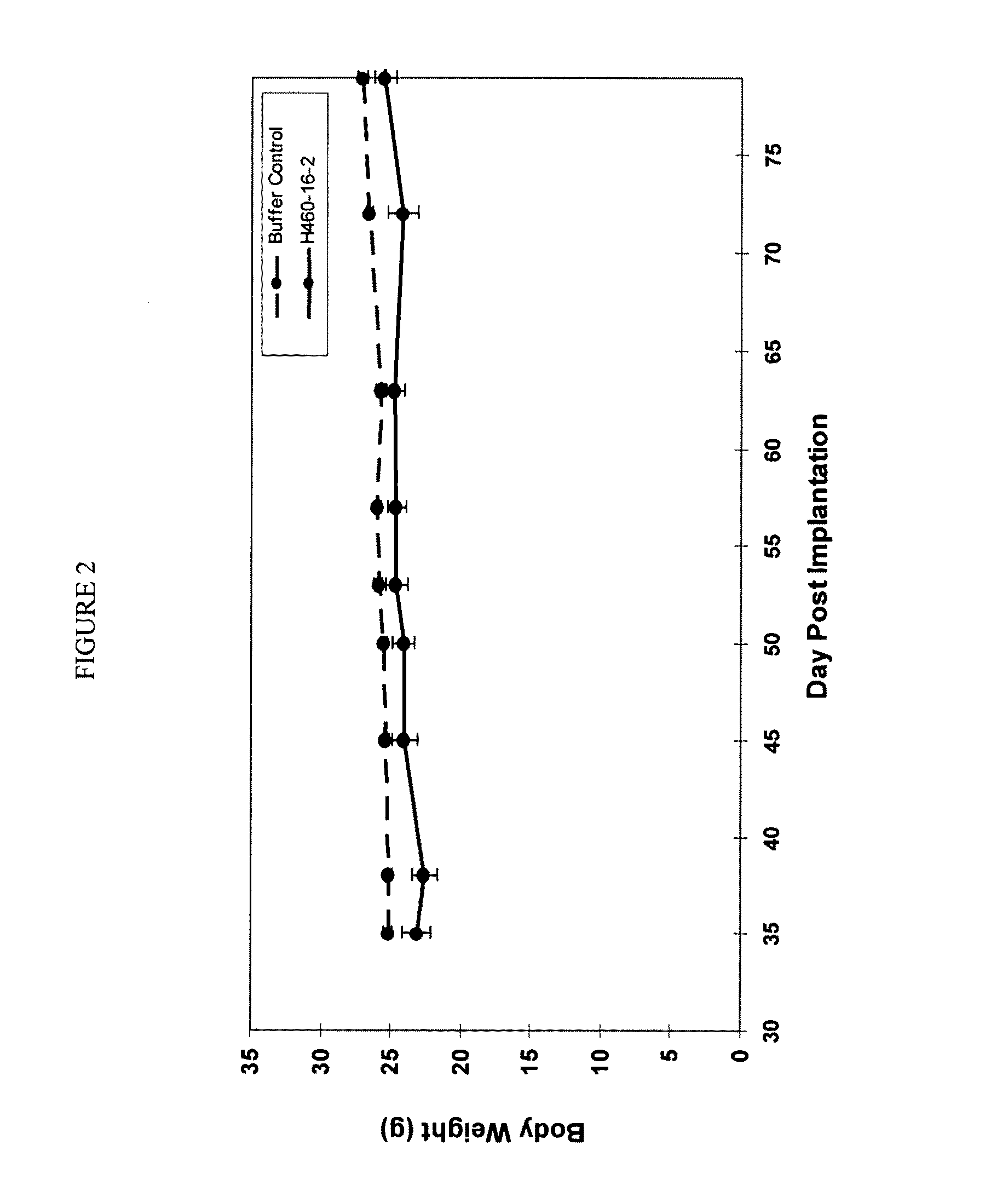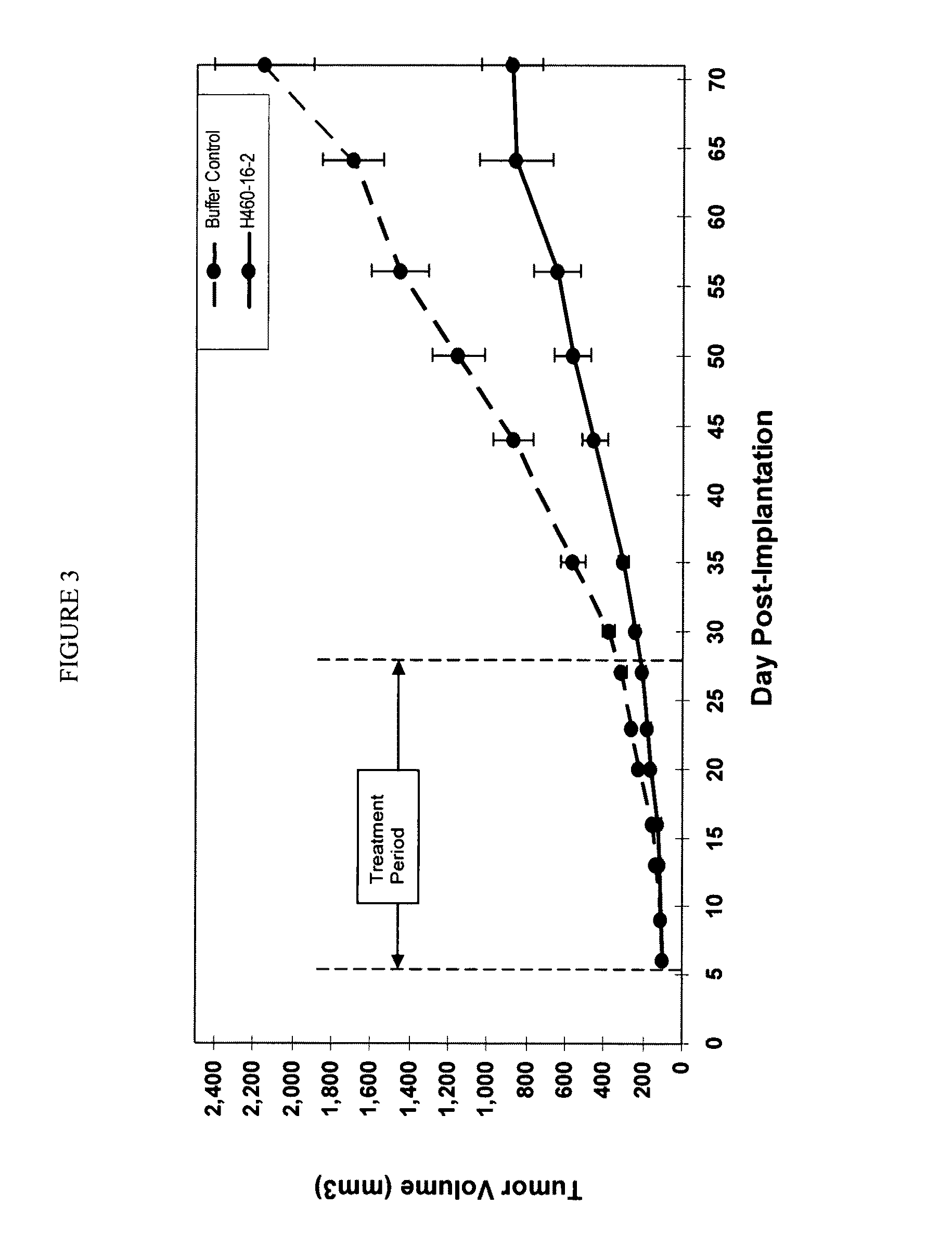Cytotoxicity mediation of cells evidencing surface expression of CD44
a cytotoxicity and surface expression technology, applied in the field of cancer diagnosis and treatment, to achieve the effect of enhancing the possibility of targeting tumors, and prolonging the survival tim
- Summary
- Abstract
- Description
- Claims
- Application Information
AI Technical Summary
Benefits of technology
Problems solved by technology
Method used
Image
Examples
example 1
[0189]The hybridoma cell line H460-16-2 was deposited, in accordance with the Budapest Treaty, with the American Type Culture Collection (ATCC), 10801 University Boulevard, Manassas, VA 20110, on Sep. 4, 2002, under Accession Number PTA-4621. In accordance with 37 CFR 1.808, the depositors assure that all restrictions imposed on the availability to the public of the deposited materials will be irrevocably removed upon the granting of a patent. The deposit will be replaced if the depository cannot dispense viable samples.
In vivo Tumor Experiment with Human MDA-MB-468 Breast Cancer Cells
[0190]H460-16-2 has previously demonstrated (as disclosed in Ser. No. 10 / 603,000) efficacy against a MDA-MB-231 human breast cancer xenograft model. To extend this finding, H460-16-2 was tested in a MDA-MB-468 human breast cancer xenograft model. With reference to FIGS. 1 and 2, 8 to 10 week old female athymic nude mice were implanted with 5 million human breast cancer cells (MDA-MB-468) in 100 microli...
example 2
In vivo Tumor Experiment with Human PC-3 Prostate Cancer Cells
[0194]H460-16-2 has previously demonstrated (as disclosed in Ser. No. 10 / 810,165) efficacy against a PC-3 human prostate cancer xenograft model in conjunction with the chemotherapeutic drug Cisplatin. To determine if efficacy could be demonstrated in the absence of drug, H460-16-2 was tested alone in a different mouse strain xenograft model. With reference to FIGS. 3 and 4, 8 to 10 week old male athymic nude mice were implanted with 5 million human prostate acancer cells (PC-3) in 100 microliters PBS solution injected subcutaneously in the right flank of each mouse. The mice were randomly divided into 2 treatment groups of 10. On day 6 after implantation when the average mouse tumor volume reached approximately 95 mm3, 20 mg / kg of H460-16-2 test antibody or buffer control was administered intraperitoneally to each cohort in a volume of 300 microliters after dilution from the stock concentration with a diluent that contain...
example 3
In vivo Tumor Experiment with Human MDA-MB-231 Breast Cancer Cells
[0198]H460-16-2 has previously demonstrated (as disclosed in Ser. No. 10 / 603,000) efficacy against a MDA-MB-231 human breast cancer xenograft model. To determine effective dose levels, (ch)ARH460-16-2-IgG1 was tested at various doses in an established MDA-MB-231 human breast cancer xenograft model. With reference to FIGS. 5 and 6, 8 to 10 week old female SCID mice were implanted with 5 million human breast cancer cells (MDA-MB-231) in 100 microliters PBS solution injected subcutaneously in the right flank of each mouse. The mice were randomly divided into 5 treatment groups of 10 when the average mouse tumor volume reached approximately 100 mm3. On day 11 after implantation, 20, 10, 2 or 0.2 mg / kg of (ch)ARH460-16-2-IgG1 test antibody or buffer control was administered intraperitoneally to each cohort in a volume of 300 microliters after dilution from the stock concentration with a diluent that contained 2.7 mM KCl, 1...
PUM
| Property | Measurement | Unit |
|---|---|---|
| median time | aaaaa | aaaaa |
| median time | aaaaa | aaaaa |
| median time | aaaaa | aaaaa |
Abstract
Description
Claims
Application Information
 Login to View More
Login to View More - R&D
- Intellectual Property
- Life Sciences
- Materials
- Tech Scout
- Unparalleled Data Quality
- Higher Quality Content
- 60% Fewer Hallucinations
Browse by: Latest US Patents, China's latest patents, Technical Efficacy Thesaurus, Application Domain, Technology Topic, Popular Technical Reports.
© 2025 PatSnap. All rights reserved.Legal|Privacy policy|Modern Slavery Act Transparency Statement|Sitemap|About US| Contact US: help@patsnap.com



